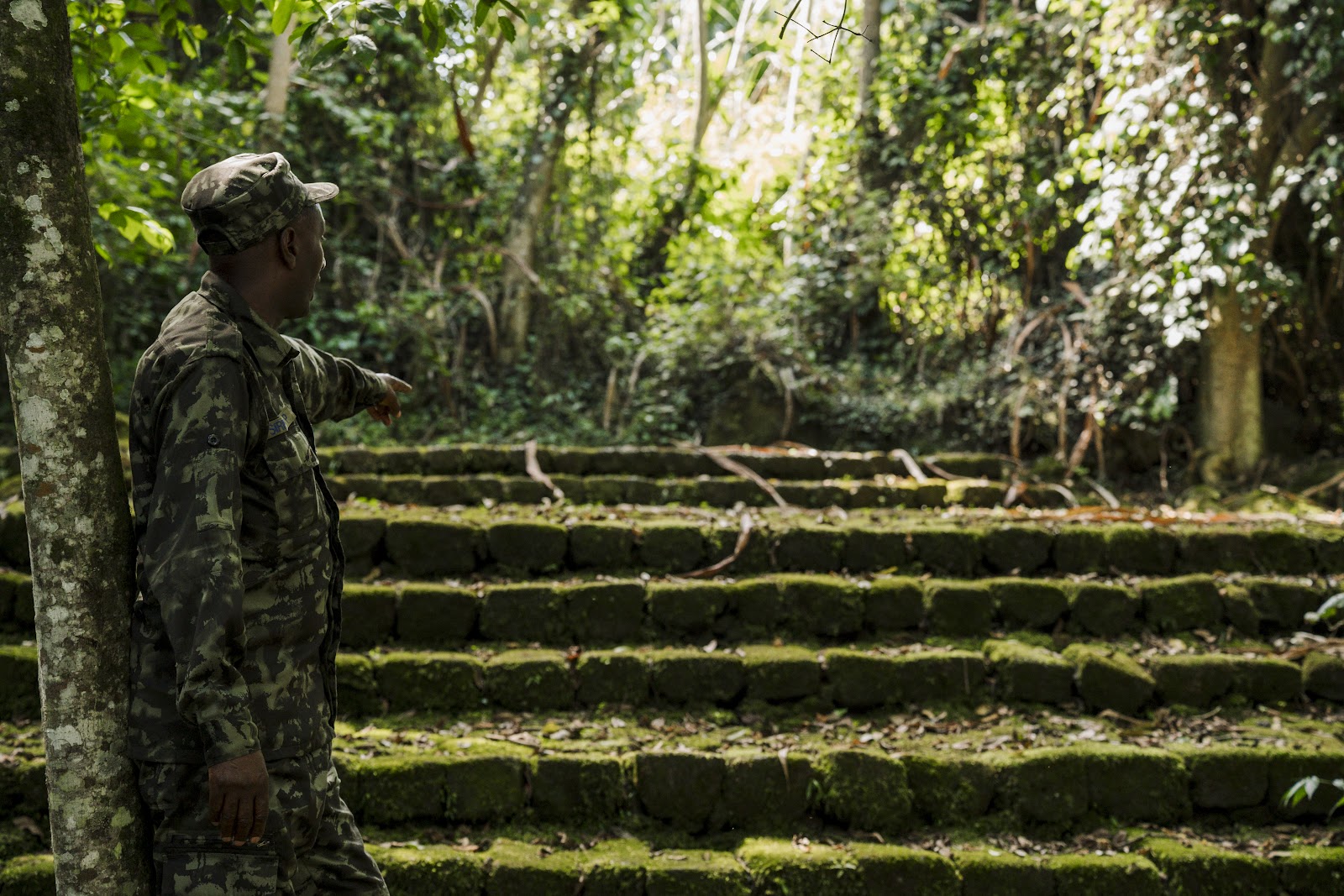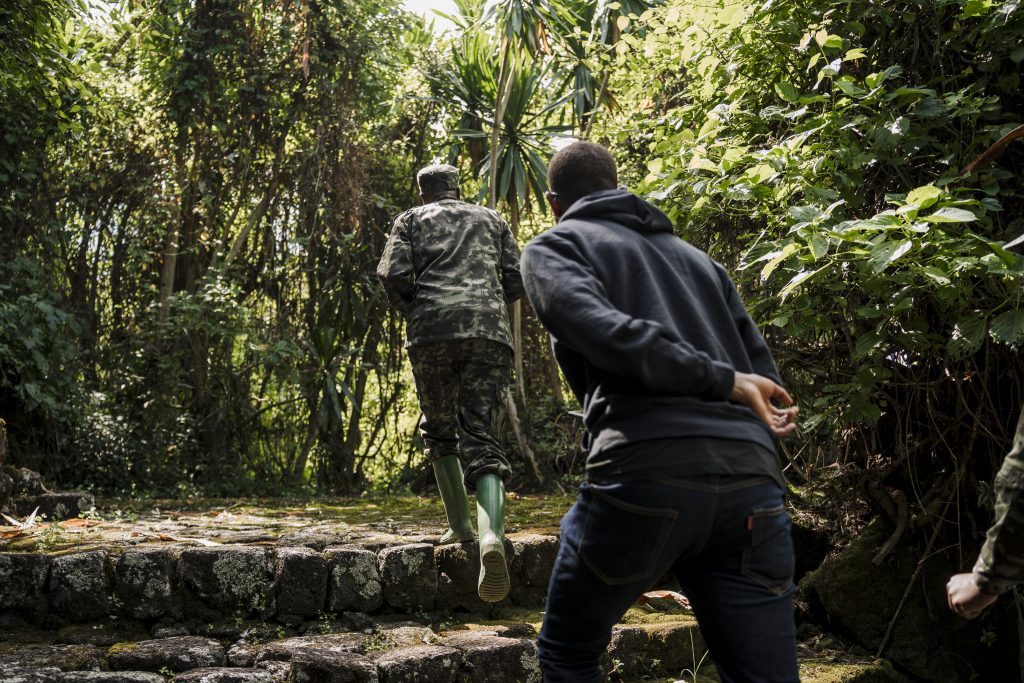
Discover the Historic Treasures of Musanze
Historical Origins of Musanze
As visitors will quickly notice, Musanze is a dynamic city, whose vibrant business sector makes it one of the main commercial hubs in the country. The buzzing city of Musanze, formerly known as Ruhengeri, started out as a trading post after the arrival of Arab and Indian merchants in the early 1900s. Arriving from the East African coast, they set up shops, where they traded goods like clothes, farming hoes and cotton thread with the local population.
Shortly after, Belgian colonial officials settled in the region in what is today known as “Ibereshi” or the quartier Belge, as Musanze became a major outpost for the Belgian colonial authorities. At that point, the city started to grow, with emerging infrastructure like hotels, produce markets and the Ruhengeri hospital.
Today, Musanze is one of the most popular tourist destinations in Rwanda. It is the gateway to the Volcanoes National Park, and therefore a key stop for all who want to do the famous gorilla trek. Beyond that, Musanze boasts a rich cultural scene, with restaurants, nightclubs and art galleries to keep you entertained.

However, dig a little further and you will find that beneath Musanze’s touristic spots lies a fascinating historical past, carefully woven within the fabric of the city.
With a lot of Rwanda’s history, it is often difficult to distinguish between the mythical and the factual, and Musanze is an accurate representation of this.
When visiting the multiple sites around the city, folklore blends with history to paint a colourful picture of the past.
Buhanga Eco-Park

One of the must-visit spots while in Musanze is the Buhanga Eco-Park. The park boasts a variety of indigenous tree species, with trees as old as 300 years. Despite its small size (around 31 hectares), the park has dense, rugged trails cut through volcanic stone, weaving through lush sprawling vegetation, punctuated with colourful butterflies and constant birdsongs.
But the intrigue of the park doesn’t end there. Buhanga is also renowned as a royal palace of Gihanga Ngomijana, the first king of Rwanda and founder of the Rwandan ancient kingdom. Thereafter, every royal coronation until king Mutara III Rudahigwa took place at Buhanga.
As you make your way through the park, you will quickly learn that you are walking on sacred ground. The tour guides enthusiastically share their extensive knowledge of Buhanga and notably, the cultural significance of artefacts like the “Inyabutatu”, a tree that looks like three trees in one, to all Rwandans today. Pierre, who has been a guide at the park since 1998, explains that “the tree represents the unity of all Rwandans, because just like these three trees come together to form one, all Rwandans are united as one people”.
Learn more about Buhanga Eco-Park, and schedule a tour here.

The Roots of Nyabinghi Heritage Center is another spot visitors don’t want to miss out on in Musanze. Ran by the Burera Youth Community, the Center aims to preserve the legacy of Nyabinghi, also spelled Nyabingi, a religious and historical figure from East African oral tradition.
“By educating people about Nyabinghi’s spiritual practices and the role they had in her followers’ lives, the Center hopes to change the reputation of Nyabinghi worship from an occult and satanic ‘cult’ to a legitimate religious belief,” says Ishimwe Christian, the Managing Director of the Roots of Nyabinghi Heritage Center.

In the case of Nyabinghi, the line between fact and folklore is yet again blurred, but oral history tells us that Nyabinghi was a legendary woman whose name means “mother of abundance” or “the one who possesses many things”. Long after her death, she was still thought to be a powerful force in everyday life, and her followers continued to communicate with the spirit of Nyabinghi. For her followers, religious practice operated through a medium who was in communication with the spirit of Nyabinghi. To appease her spirit, believers brought offerings to the medium who would negotiate with the spirit on the believer’s behalf.
One such medium was Muhumuza, who gained prominence in the early 20th century, during the reign of King Yuhi V Musinga. By claiming spiritual authority through her Nyabinghi possession, Muhumuza was able to rally the people of northern Rwanda behind her to challenge Musinga’s claim to the throne. Over the next few years, she raised armies and organised a series of insurrections aimed at enthroning her son, who she claimed was the legitimate heir.
Quite notably, she also led a popular resistance against the German and British colonists until her arrest in 1911. This made her not just a religious figure, but a symbol of anti-colonial resistance as well. As you will learn at the Roots of Nyabinghi Heritage Center, the religious following of Nyabinghi eventually spread to the Caribbean as a result of this association with colonial resistance.
The Center also offers community activities that allow visitors to immerse themselves in other aspects of Musanze’s history. They include:

Basebya Trail – Visitors take a nature walk on an island inside Rugezi Marsh. This island was once home to Basebya ba Nyirantwari, a man who once had a confrontation with King Yuhi V Musinga.
Tatiro Trail – This activity allows visitors to walk up Tatiro Hill, the place where King Ruganzu II Ndoli used to gather his warriors before battle. On this trail, you will also encounter footprints set in stone and King Ruganzu’s throne at Nguri cave.
Arts and Crafts – At Ikirezi Art Gallery, visitors get to experience making art and crafts with resident artists, and take them home as souvenirs, while also learning the stories behind Rwandan traditional handicrafts.
Get to Learn about Rukara rwa Bishingwe

Similar to Muhumuza, Rukara rwa Bishingwe is a figure who has come to represent resistance against colonial rule in Rwanda. A chief of the Abarashi clan in Burera, Northern Rwanda, he gained notoriety in 1910 when he got into a fight with and killed Fr. Lupias, a German Catholic priest.
Rukara then fled Rwanda to the Democratic Republic of the Congo and afterwards to Uganda, before finally deciding to return to Rwanda two years later. However, he was soon captured and put on trial by colonial authorities, who sentenced him to death.
Rukara was later executed by hanging at Musanze prison (previously Ruhengeri prison), giving birth to his status as a symbol of colonial resistance. The facts of his story may be well known and documented, but just like a lot of Musanze’s history, Rukara’s saga has been elevated to legendary status, making him a modern-day folk hero.
Musanze is a destination rich in history and culture, offering visitors lifetime memories. From its origins as a trading post to its significance in cultural preservation, the city invites you to explore its historic treasures. Visit Musanze for an unforgettable journey through time and culture, ensuring a truly unique and enriching experience.
Learn more about Musanze at www.visitmusanze.com

